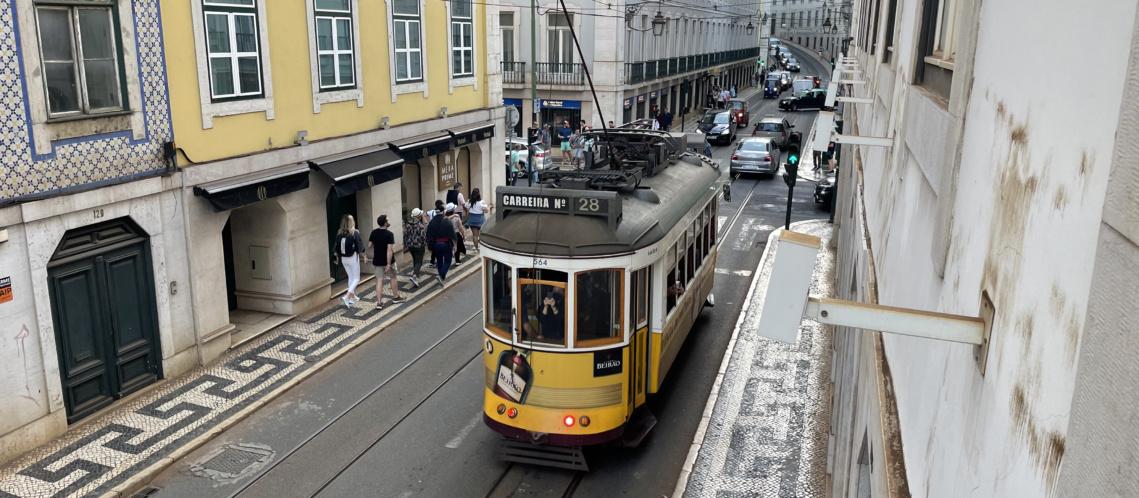There are lots of different ways to get around Portugal and we used almost all of them during our 10 days there. Below are Portugal transportation highlights and some tips and tricks for navigating the country.
Inter-City Transportation
Portugal is a relatively small country so a trip there will likely present you with the opportunity to visit several different cities or parts of the country. There are many ways to get between cities or major regions of the country.
Trains
Trains feel like a very European way to get around a country or between countries. I remember the excitement of getting a Eurail Pass on my first big European trip and using it travel across Spain and France. Trains are a fast, cheap and easy way to get between major cities.
In Portugal, the train system is operated by Comboios de Portugal (CP), and they offer four different types of service: Alfa Pendular (AP), Intercidades (IC), Regionais (R) and Urbano (U).
The Alfa Pendular is the high-speed train that connects the major cities such as Porto, Lisbon and Faro. We took an AP train to Porto shortly after arriving in Lisbon. We used the Metro to get from the Lisbon Airport to Oriente Station and then took the AP train to Porto-Campanha and then a quick local (U) train to the Sao Bento station. There are several different combinations for this trip – the first main leg between Lisbon and Porto can be on an AP or an IC train and the train between stations in Porto can be an R or U train (although the majority are Urbano trains). We took an AP|U combination and arrived in about 3 hours and 15 minutes.
The AP trains are the fastest and the newest. We sprung for first class (only about 10 Euros more per ticket) and appreciated the nicer, roomier car and assigned seats. Note that the CP app/website will assign your seats and try to keep your group together. The seats are numbered a little oddly across the aisle (cars are arranged 2 seats on one side and 1 seat on the other side) so that even when you have 4 sequential seat numbers, you aren’t necessarily right next to each other. On the way to Porto we were all seated together but from Tunes to Lisbon we were 2 together at the back of the train and then one in front of the other at the front of the train. This was because we purchased the Tunes – Lisbon tickets only a day in advance, whereas we bought the Lisbon – Porto tickets about a week in advance. You will get cheaper prices and better seats the further ahead you purchase your tickets. (Tickets become available for purchase 2 months ahead of the travel date.)
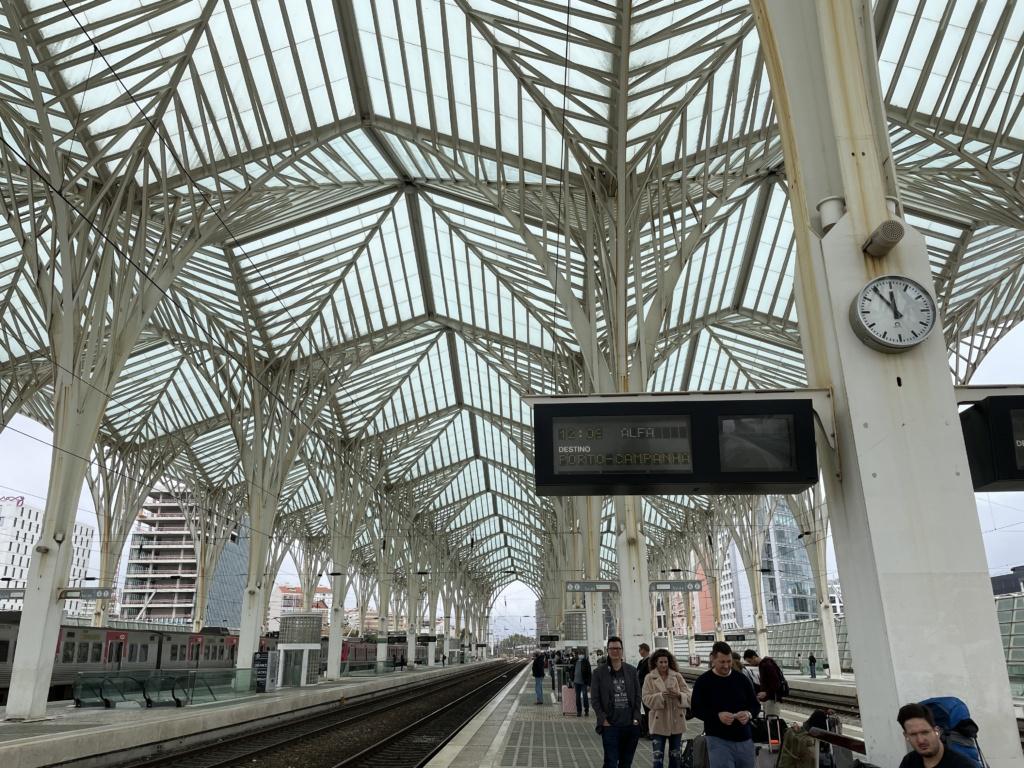
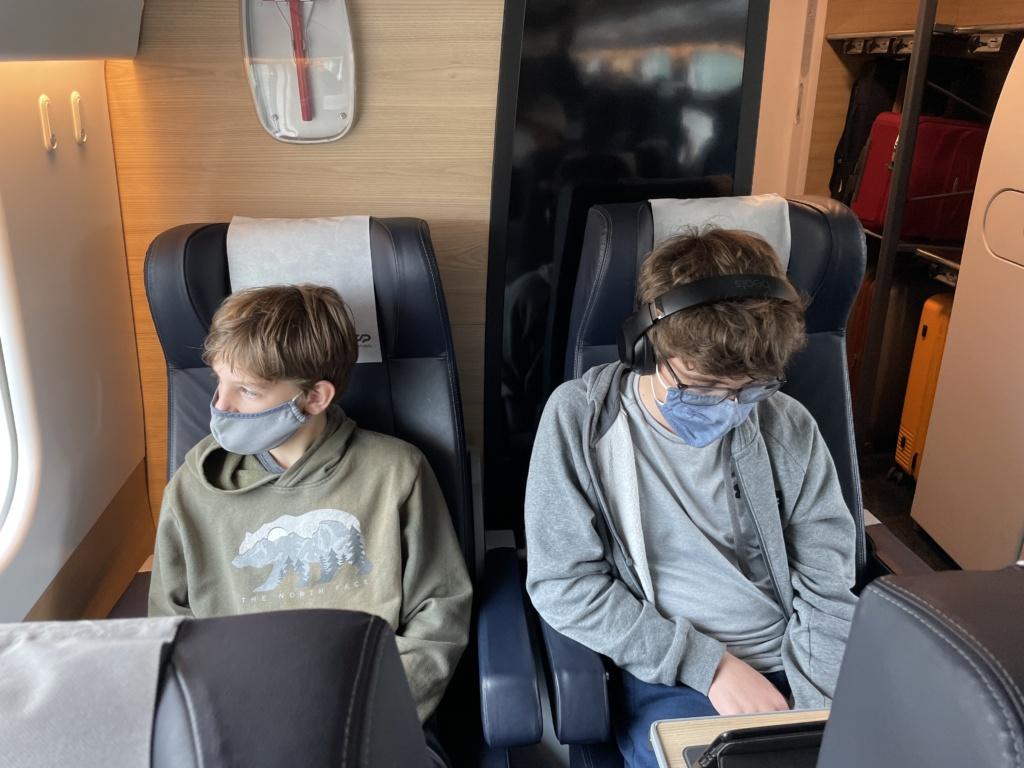
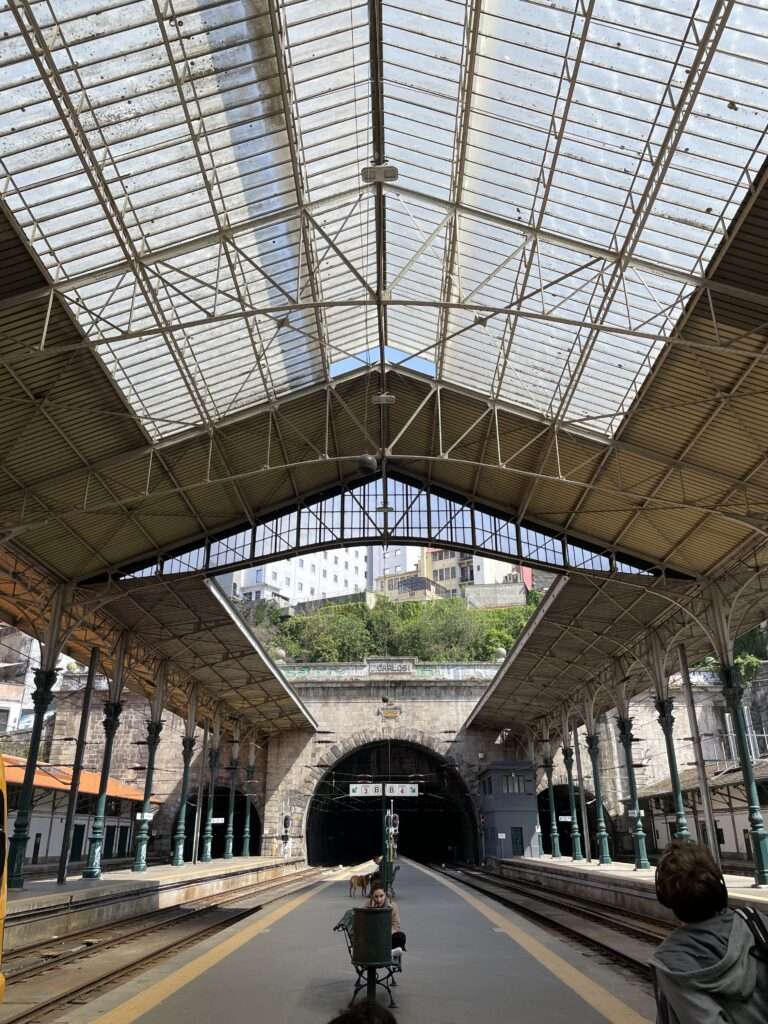
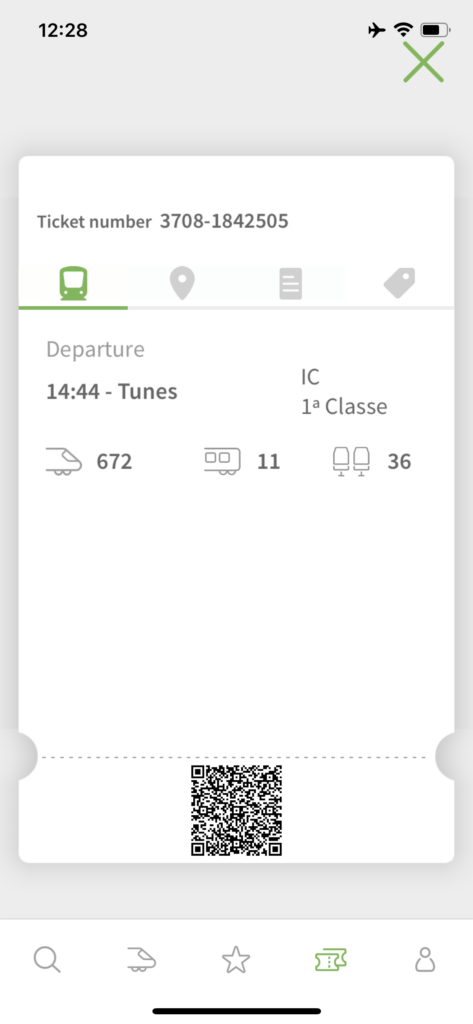
Planes
But while we were excited to use the train system, that excitement appears to be a largely foreign phenomenon. Domestic flights and EU flights are faster and often cheaper than the train. Our tour guide as well as several locals we talked to definitely did not understand the appeal of using the trains. They said that they fly everywhere because it is so cheap. It is true that Portugal does not appear to be well connected to the rest of Europe’s rail system so I can see the appeal of flying to other places in the EU, but it seems shocking to me that it could be cheaper to fly from Lisbon to Faro than it is to take the train.
Buses
There are several operators providing long range bus service connecting the major cities as well as smaller towns. Buses are especially useful to get to places off the main rail line. Although we didn’t take any inter-city buses, we talked with lots of people who swore by Flixbus as a cheaper and more direct alternative to trains. We did consider it from Lagos to Lisbon instead of the train because it would have been direct, while the train requires a connection in Tunes. Ultimately we decided on the train because we were familiar with it, but the bus could be worth a try for some of the routes where it is faster than the train and/or to destinations off the train line.
Rental Car
Rental cars are another option to get between different areas of Portugal and probably the one that gives you the most flexibility. Early on we considered renting a car for our time in the Algarve and for our return to Lisbon but ultimately decided against it. While we have driven in Europe before (Germany and Austria), it has been many years and we have not done it with our kids. Since we were traveling as a family, we wanted a lower stress option where we didn’t have to worry about navigating in a foreign country and potentially getting lost. That can be a fun adventure when you are a young couple but not so much when you are traveling with kids. I will say that I would not recommend having a rental car in any of the cities or towns. The highways seemed like a manageable way to get between cities but within the cities, driving was terrifying. Between the hills of Porto and the tight alleys of Nazare, I saw our tour guide deftly maneuvering through some pretty tricky situations and I was so glad that we weren’t trying to do that ourselves.
Tour Guide
And speaking of tour guides… this is the last way to travel between regions and my favorite. There are tons of tour guides who offer “tours and transfers” and I thought this was such a great way to get to see some smaller towns between the big cities. While the train between Lisbon and Porto did stop, for example, in Aveiro, the logistics of exploring on your own from the train were too challenging for us. I did some research and found that most train stations did not have luggage storage so it was just not realistic to tour a town with all our luggage in tow. Maybe if you are backpackers this could work out, but even then it seems challenging and uncomfortable.
Enter the tour guide! I remember seeing all the posts on the Travel Portugal FaceBook group from Igor Araujo with these amazing stops he was making with his customers on the drive between Porto and Lisbon. In addition to local Porto tours, his company (Porto Tours & Transfers) will create a custom itinerary between two locations, stopping for tours along the way. He drove us from Porto to Sintra, stopping in Aveiro, Nazare and Obidos, and it was one of my favorite days of our trip. There is no way we could have seen those 3 very different towns without him. The next day we toured Sintra with him before he drove us to Lagos.
I really feel like tour guides maximize your time and allow you to see places you otherwise wouldn’t get to see. Instead of a half a day lost to travel, we had a full day of unique stops. We saw three very different places in Portugal that we never could have visited on our own.
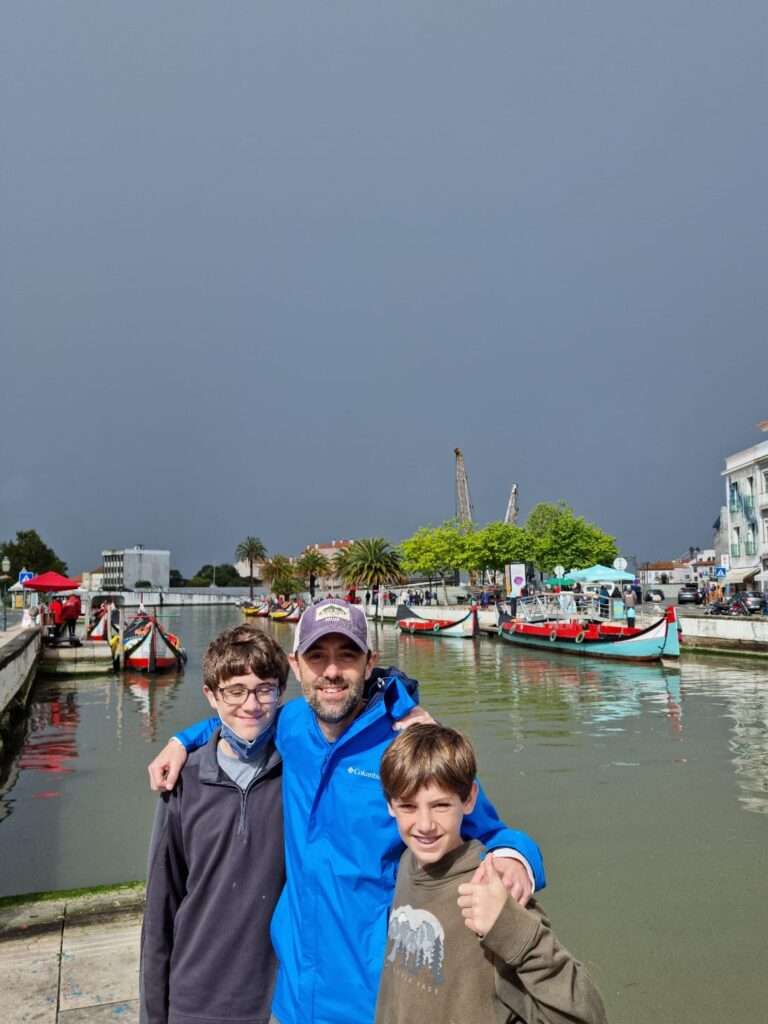
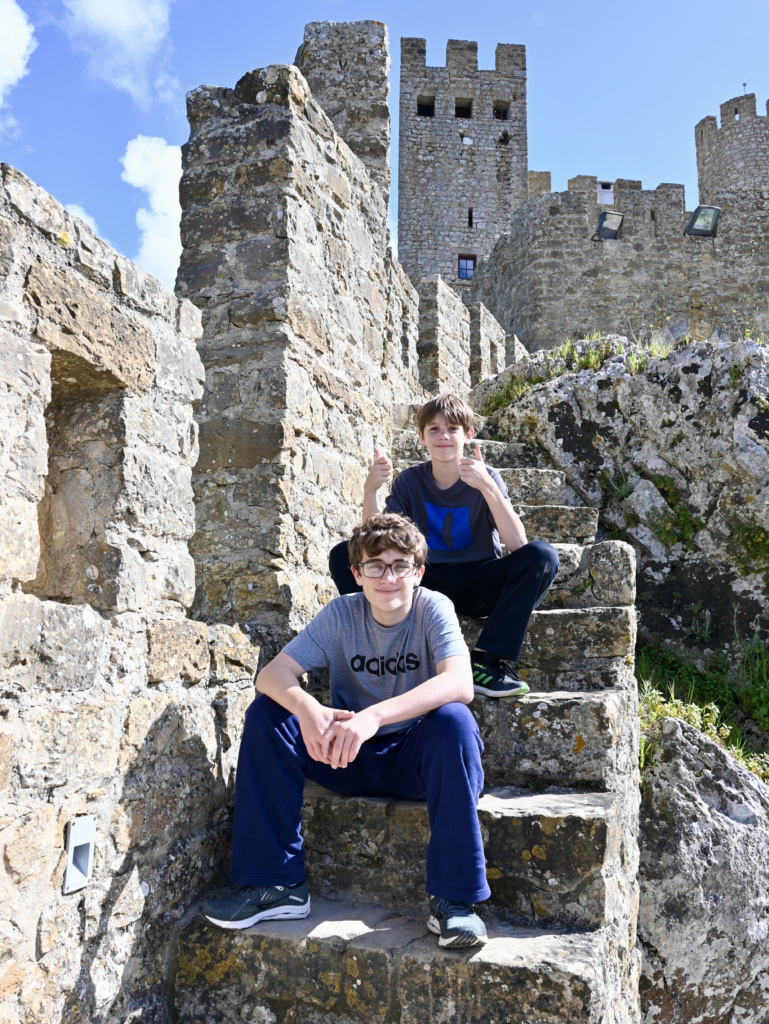
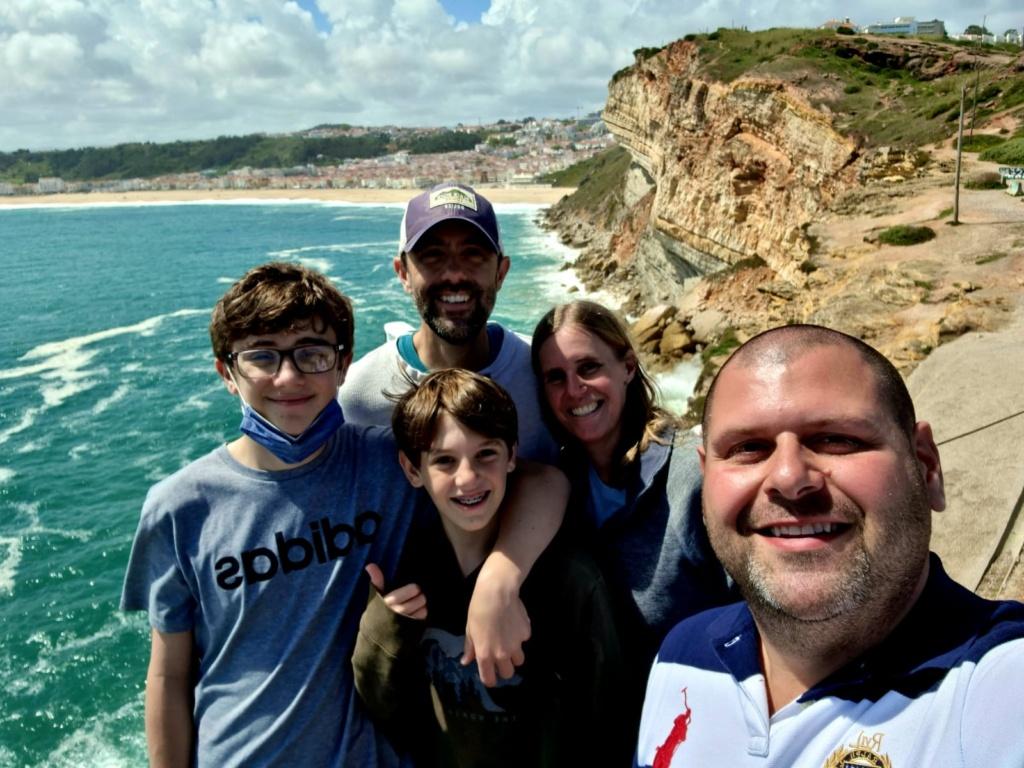
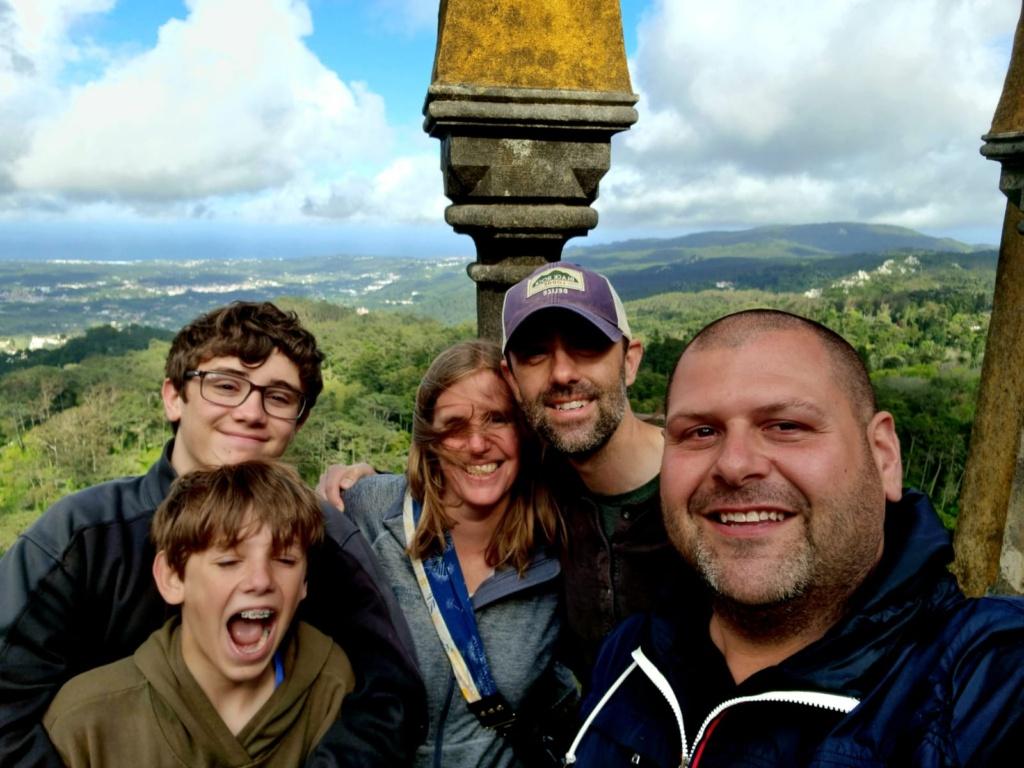
Intra-City Transportation
We did a lot of moving around in the country so I spent a lot of time planning our transportation between cities, but you have to think about transportation within cities as well. In Lisbon especially, we used many of the different modes of transportation available. Although these don’t really require advanced planning, it is wise to understand the options before you arrive.
Taxi
When we arrived back in Lisbon for the last few days of our trip, we had to return to the airport to pick up my bag. We knew this would be a long day of travel, going by shuttle and train from Lagos to Lisbon and then metro back to the airport (and then the fiasco of picking up my bag). The last thing we wanted was to struggle to figure out the metro route to the apartment we had rented and then to drag our bags a few blocks from the metro station. I had heard that Ubers were difficult to meet for pickup from the airport (there is one main parking lot to meet in and you basically just have to go and find your uber among a sea of people and cars) so we figured grabbing a taxi would be easiest. Taxis definitely cost more than Ubers but it was easy to get one and still reasonably priced. And at the end of a long travel day, it was nice to be dropped off directly in front of our destination.
Uber
We used Ubers a lot in Lisbon. Although the metro system is great and we utilized it too, sometimes we wanted to get somewhere quickly and directly. We took an Uber to the aquarium and then from the aquarium to Sao Jorge Castle. We also took an Uber on our last morning after an aborted bus ride to the airport. When we found out that the bus was going to take an hour and 20 minutes to get to the airport (!) we hopped off and called an Uber, which got us to the airport in just 15 minutes. Ubers are great because the price is negotiated beforehand so there are no surprises. They were cheaper than taxis and the drivers were prompt and professional.
Public Transportation
We used public transportation in Lisbon many times. The network is large and encompasses metro and suburban trains, buses, ferries, trams and even funiculars and a street lift! We took the metro a few times, primarily to/from Oriente Station. We also took the tram (the regular one, not the historic one) to and from Belem. And we briefly took the bus en route to the airport. (We found out too late that the direct bus line from Rossio Square to the airport was suspended due to the pandemic so we hopped on a bus to Oriente Station, thinking we could easily take a train from there to the airport. Thankfully someone popped their head in at a later stop and asked how long the ride to Oriente Station was. When the driver answered an hour and twenty minutes, we momentarily panicked before deciding to get off at the next stop and call an Uber.)
We got a 24 hour pass on the Viva Viagem card that allowed us unlimited use of the entire public transportation system for 24 hours. We used it on the tram, train and bus. Note that police officers did board the bus at one stop to check everyone’s cards. Several people without valid tickets were removed from the bus and left behind to discuss the situation with the officers. So make sure you keep your tickets handy.
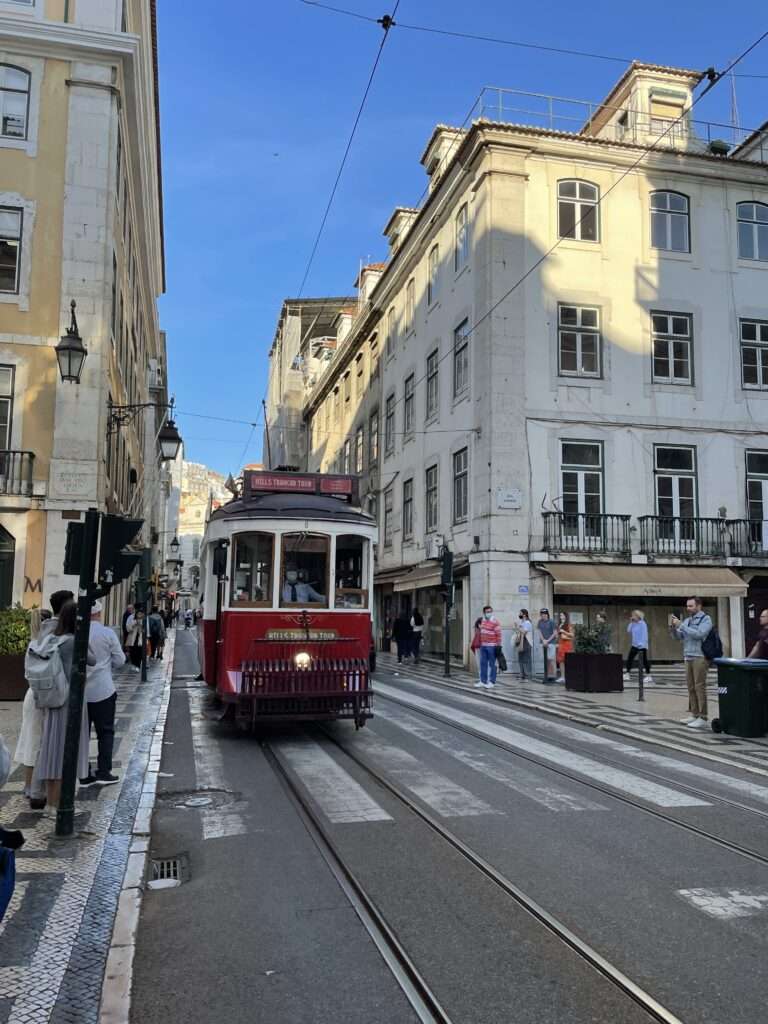
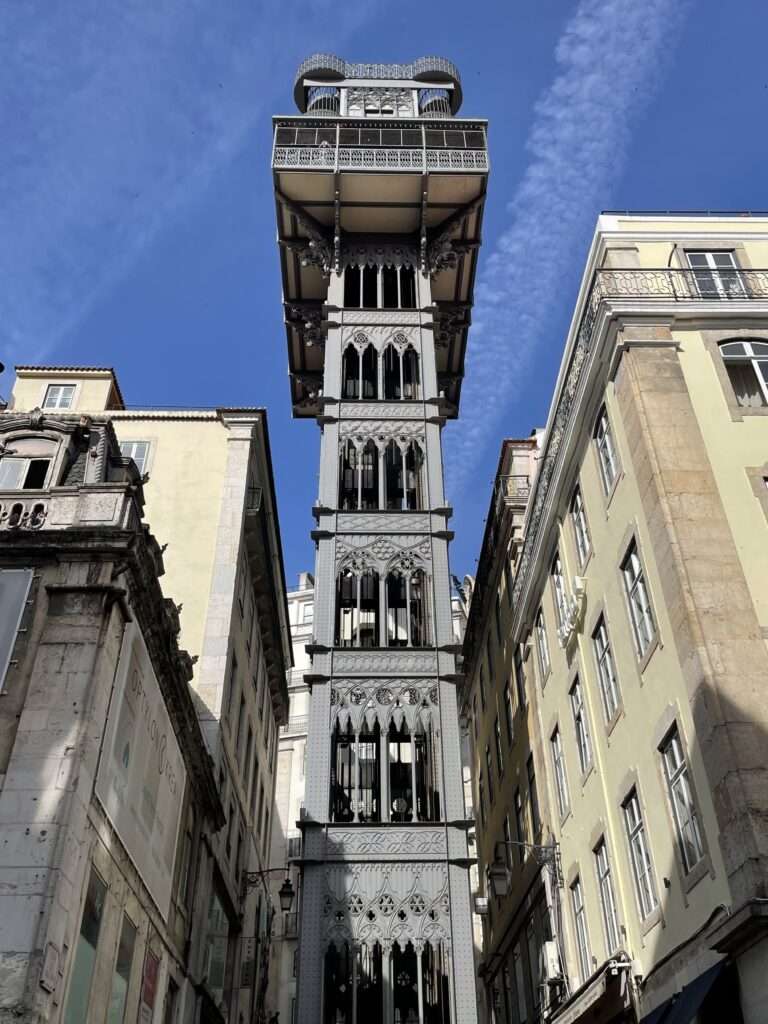
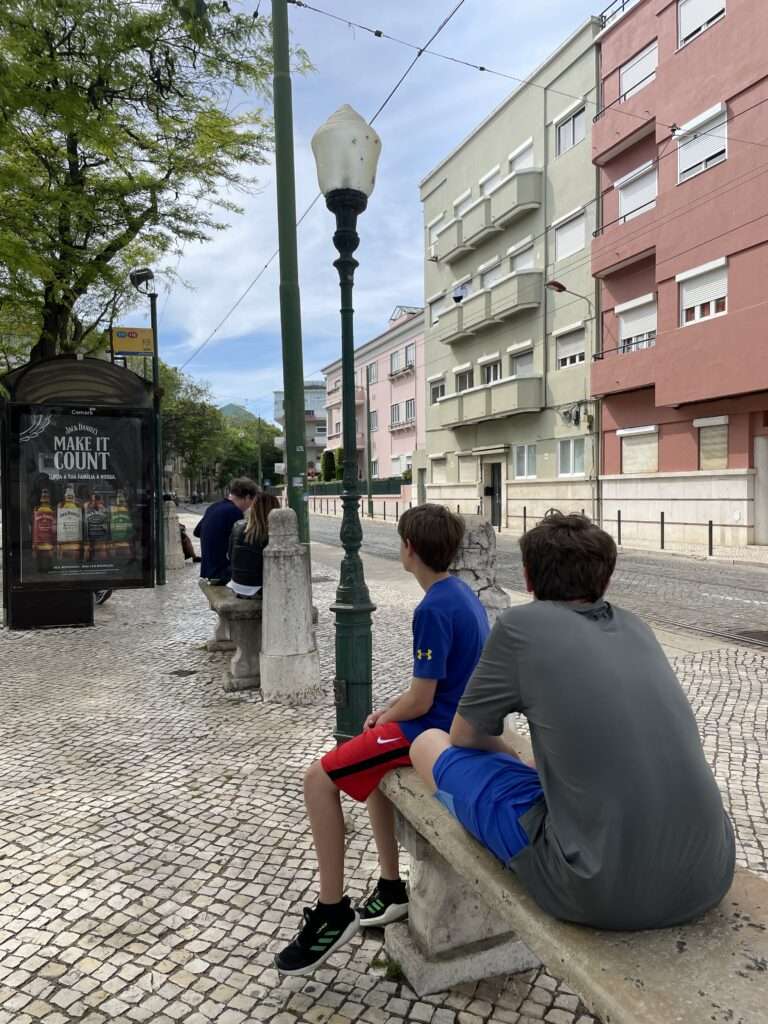
Tuk Tuks
Tuk Tuks are not a traditional Portuguese means of transportation but they are ubiquitous in Porto, Lisbon, and Sintra. The little three wheeled motorized vehicles zip up and down steep hills and around the city streets, sometimes outnumbering cars. Residents of Portugal hate them, while tourists seem to love them and often naively believe that they are native to the area and an “authentic” Portuguese experience. They can be used for tours of the city or strictly as a way to get from point A to point B. Despite their inauthenticity, I was tempted to take a tour in one in Lisbon just to get the lay of the land when we arrived but my husband was steadfastly against them. Love them or hate them, they appear to be there to stay and therefore need to be included in the list of intra-city transportation.
Walking
Even with all these great options for how to get around, the means of transportation we used the most in Porto, Lagos, and probably even Lisbon was our own two feet. In Porto we actually only used public transportation to get to the city. Once we were there, we walked everywhere. It was definitely hilly and could be tiring but we covered most of the city on foot from our hotel near Batalha Square to across the Luis I Bridge and back.
We only had a short stay in Lagos but after our tour we walked from town to our hotel, Belmar Spa & Beach Resort, despite the fact that many reviews say the hotel is not within walking distance of old town.
And in Lisbon we walked quite a bit as well. Lisbon is the most spread out of the three cities we visited and it would be nearly impossible to navigate the entire city only on foot. But we walked a good bit in the neighborhoods and attractions near our hotel and then within the different areas we had travelled to using other means. If you have the time (and energy), walking is really the best way to get a feel for a city.
